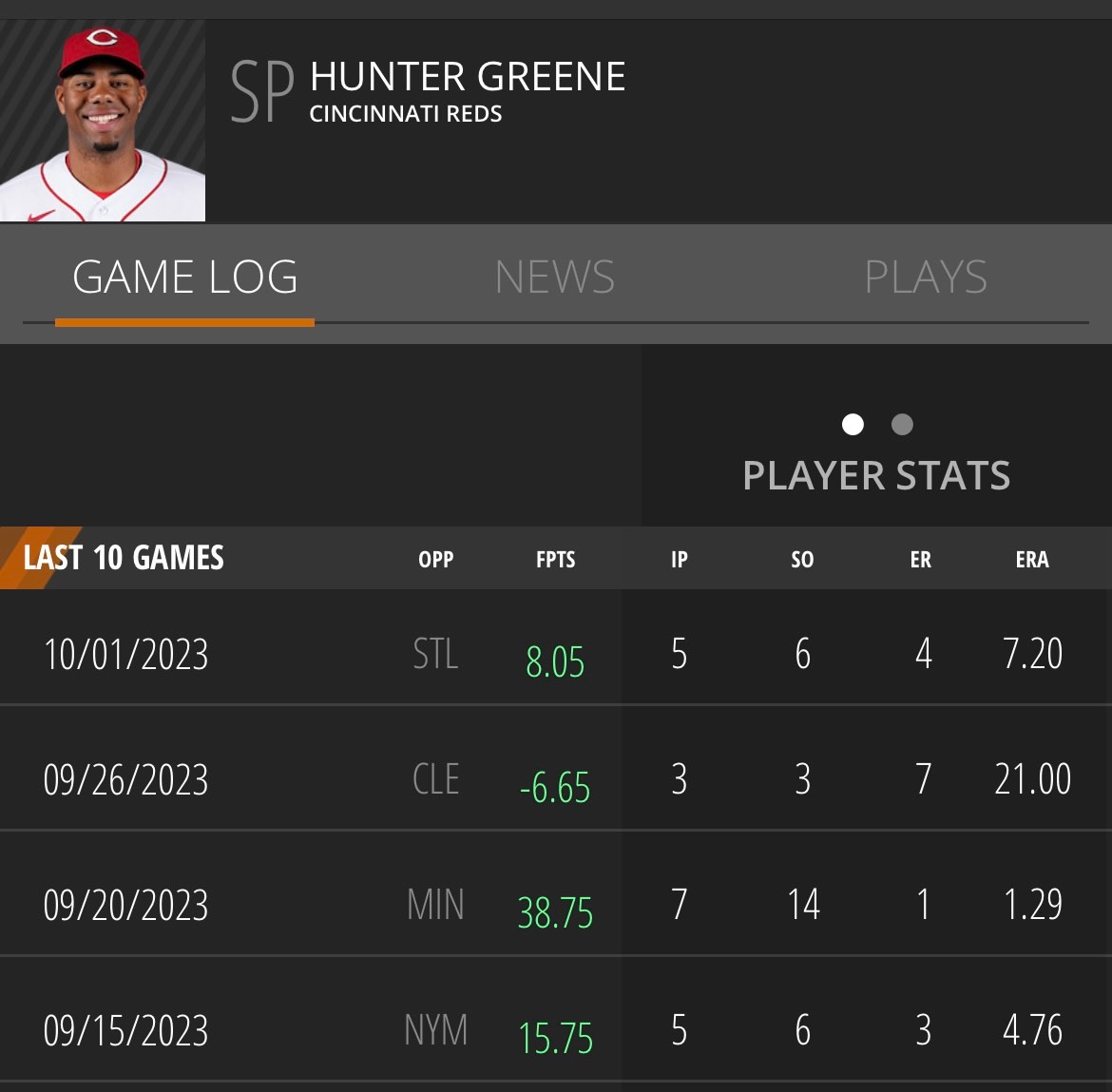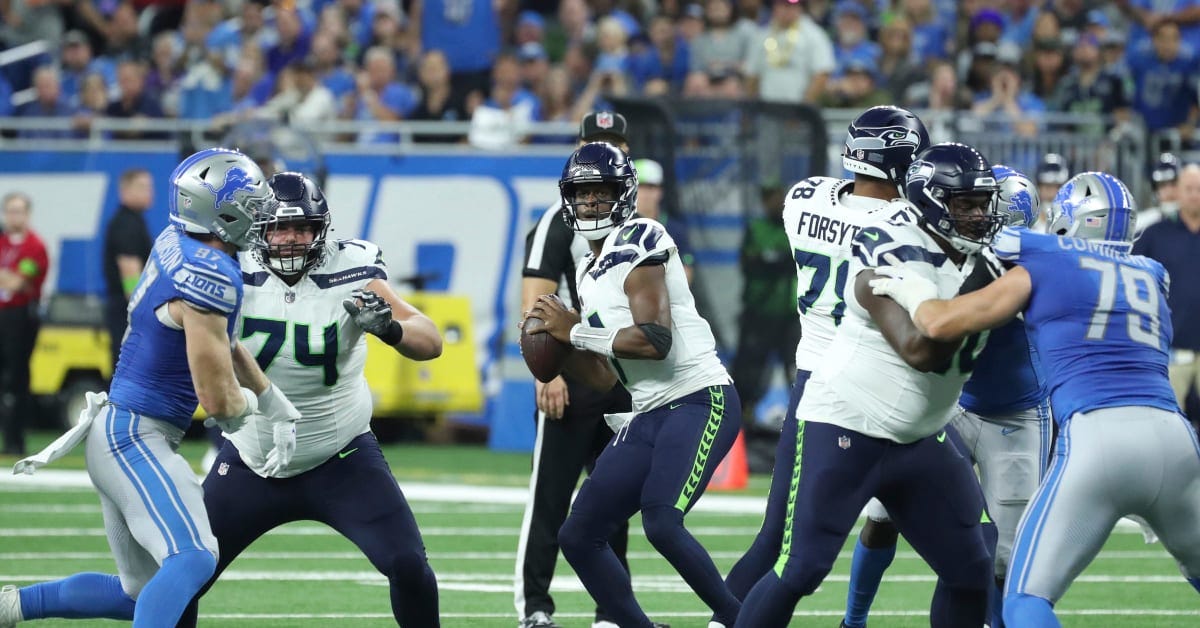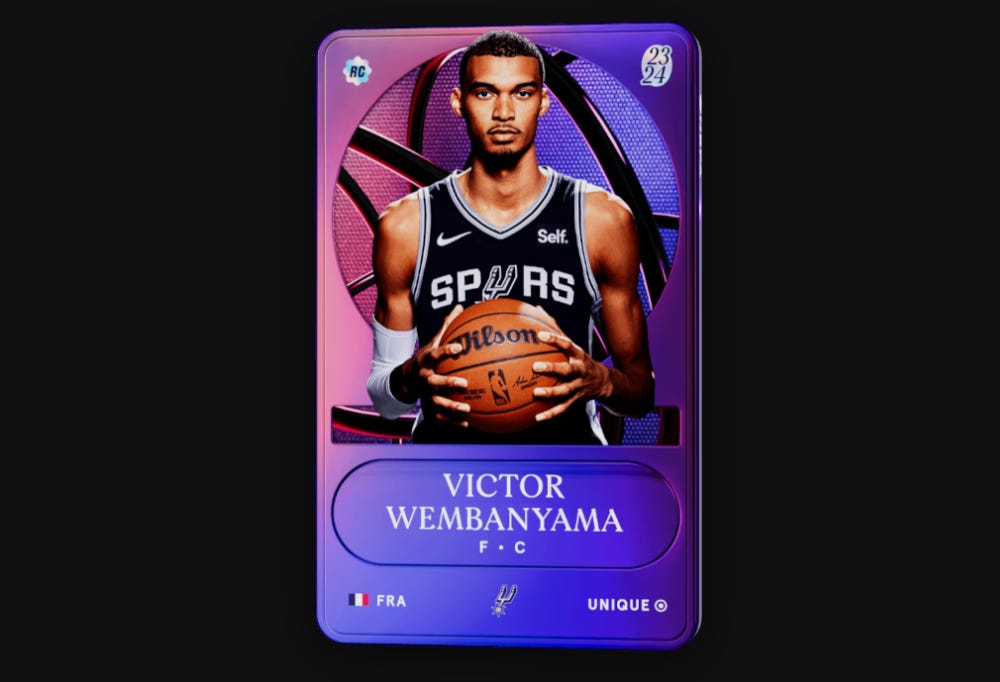Offseason Sorare MLB Game Theory Special
I decided to pick up “Same As Ever” by Morgan Housel after seeing positive sentiment about the book online.
For those who don’t know, Housel is the author of “The Psychology Of Money”, the widely popular book that sold over 3 Million copies since its release in late 2020.
In his most recent book, Housel invites readers to identify the many things in life that never change, while also talking about optimizing risk and seizing opportunity.
Full disclosure: I haven’t finished the book, but it got me thinking about Game Theory.
I took three chapters from the book, “Risk is What You Don’t See”, “Best Story Wins”, and “Tiny And Magnificent” and applied each lesson to the game of Sorare MLB.
Let’s dive in!
Risk Is What You Don’t See
“We are very good at predicting the future, except for the surprises - which tend to be all that matter” says Housel.
There was a semi-viral tweet last week from popular Web3 personality “andy8052” in response to a more viral tweet from Entrepreneur Nick Huber who was criticizing sports betting.
With most arguments coming down to different interpretations of words, and social media discussions not allowing for much nuance, it made sense that this became quite a polarizing topic.
On one hand, if you define “gambling” as strictly sports betting (Which is what the meme was in response to) then this looks like an unethical advertisement for a Sportsbook.
But if you replace the negative connotation of the word “gambling” with the phrase “risk taking”, then this is something you would find in your average self-help book.
The most successful people in the world did not become successful solely from stacking orange “work” boxes on their heads.
Successful people made several calculated bets that paid off in the future.
Even everyday people take incredible risks that make or break their future self.
Going to college is a huge risk. Your reputation, network, level of debt, and oftentimes entire career are at stake based on the decisions you make in college, all while barely being an adult.
Taking big risks drastically increases your potential upside, while simultaneously increasing your potential downside.
That is why taking calculated risks is so important.
Risking It To Win Games
Housel talks in this chapter about Black Swan events, aka outlier events that no one factored into their daily lives, such as COVID-19.
And while almost everyone could not have expected a global pandemic in the 21st century, in theory, people that understood things such as airborne viruses or bats in Chinese caves could have predicted what was to come better than the average person.
When trying to place first in a large-field Sorare MLB contest, the goal is to hit on an unlikely event from one, if not all of your players.
When I say unlikely I don’t mean unpredictable, I just mean a score that would stand out on a 162-game box score.
And the best part about predicting baseball outcomes is the readily-available numbers can tell us where the upside is.
This is my favorite example from last season:
Reds’ pitcher Hunter Greene had a top-10 strikeout rate this year (30.5%) but he paired that with an above-average walk-rate (9.6%), a not great xFIP (4.00), and a bad HR/9 (1.53).
He’s the kind of pitcher who can can you 12+ strikeouts and no runs in a good matchup, and can give up 8 earned runs and less than two innings in the next.
I absolutely loved him in a September matchup against the Twins, who have a good offense, but who struck out at the highest rate in the league in 2023 (26.6%).
Greene punched out 14 Twins over 7 innings for a massive Sorare score.
In literally his next start, Greene faced the Guardians, who strike out at the lowest rate among all 30 teams (18.7%).
Cleveland has the complete opposite philosophy at the plate than that of Minnesota, namely to focus on not taking strikeouts at the expense of hitting for power.
Greene lasted 3 innings in this matchup, while striking out just 3 batters and surrendering 7 runs.
All this in a matchup that most people thought was unthreatening. I mean the Guardians were bottom-4 in runs scored (662) while the Twins made it to the ALDS.
However, Greene’s outlier performances were somewhat predictable to those who knew the stats of his opponent.
And in then end, his big outlier performance is all that mattered to those who rostered him.
Hitters Take On Extra Risk
Jonathan Bales has a saying in his book “Fantasy Sports For Smart People” that if playing MLB DFS is like grocery shopping, then rostering pitchers is like buying bread and eggs, while rostering hitters is like buying snacks.
The point is, there is going be a lot more variance when rostering hitters, mostly because the position has a much smaller number of events that occur.
In DFS, even the best hitters will have 4 or 5 plate appearances while a starting pitcher could get all the way up to 90 pitches.
Sorare changes this quite drastically however, with the 3 or 4 day Game Weeks tripling or quadrupling the size of hitter events.
Either way, the point is that there is going to be much more inherent variance when rostering hitters, and in large field tournaments, it makes sense to roster stacks of teams that can reach the upper echelon within their range of outcomes.
The question becomes: Should I make an effort to roster a stack that I think is contrarian, ie: players who the field won’t be playing, to have less competition when that stack indeed puts up a big score?
If we are playing DFS then the answer is certainly yes, and it goes back to what I was saying about the sample size of events in baseball.
Anything can happen in 4 at bats, but when you make it 16 at bats, you smooth out the variance.
I definitely think there is merit to being contrarian in Sorare, but it means something more like this…
“Corey Seager is by far the best Middle Infield play on the board. In this tournament that has thousands of entries, it might make sense to include Tim Anderson on this team instead. Also, I’m still going to roster Gerrit Cole against the Royals and include my three-man Dodgers stack that is playing at Coors Field”.
The point is, from a game theory perspective, it makes sense to pivot off of some obvious plays to more “under the radar” ones, but I would say this should be emphasized more heavily in large-field contests (Limited and Rare) and should only apply to two players maximum.
One last note because I’m rambling.
Keep in mind that, because of the way the game is designed, ownership in Sorare won’t ever reflect the amount of people who actually wanted to roster a player.
This would only be the case if every user owned a card of each player in the MLB.
Even if Gerrit Cole “should” be 50% rostered against the Royals, he won’t be because not every user has a share of his Sorare card.
This is yet another reason why factoring in ownership matters less in Sorare than it does in DFS, where every user has access to the entire player pool.
But like how Morgan Housel says that some things never change (queue the Frozen song), where there is a game there will always be some degree of a game theory.
Unless you’re playing UNO, in which case that game is 99% luck.
Best Story Wins
Something funny happened when I read the title to this chapter.
Prior to reading “Same As Ever” I had just finished Yuval Noah Harari’s “21 Lessons For The 21st Century”, which, alongside, “Sapiens” and “Homo Deus”, completed the Harari trio for me.
Harari is known for preaching about the importance of stories in shaping humanity.
Upon reading the chapter title I wondered if Harari would be referenced, and sure enough there he was a few pages later.
There’s an old cliche in DFS that lineups need to “tell a story”.
If one event is likely to happen, then that makes another event more likely to happen, which makes another event unlikely to happen, and so on.
One clear example of a bad story in MLB would be rostering a pitcher and choosing opposing hitters on the same team.
If said pitcher has a big game, it likely means he didn’t surrender any runs, which means the hitters he faced did not fare well at the plate.
That’s fairly obvious, but another winning story says: “If I expect X player to have a big game, then it is likely he racked up Runs, RBIs and extra plate appearances, which means it is likely that the hitters batting near him in the lineup also delivered Runs and RBIs and earned extra plate appearances (aka “stacking”).
You might think stacking in MLB is another obvious story. I don’t blame you.
Here is a story that might get overlooked in MLB:
If I project the three-game Dodgers/Rockies series to lean heavily in LA’s favor, specifically with Dodger wins of four or more runs in each game, playing LA’s closer Evan Phillips wouldn’t make much sense in a story.
If the Dodgers win by so many runs, then it wouldn’t be necessary for them to deploy Phillips if they aren’t in a save situation.
I wouldn’t treat this one as gospel however, because even with such a predictably lopsided matchup in the MLB, it is still hard to predict that a team will sweep another team with a huge run differential.
Stories Beyond Baseball
I’ll admit that there are plenty of more stories to be found in sports such as NFL and NBA where there are more “events” that happen over the course of the game.
Here’s a good story that might get overlooked in NFL…
I predict that Geno Smith will have a big game against the Lions.
Geno is not a running quarterback, so if he has a big game it most likely means that one or two of his wide receivers also had a big game.
If the Seahawks passing attack puts up several touchdowns and take a big lead in the first half, it means that the Lions will need to switch their offense to catch-up mode in the second half.
Detroit deploys a two-RB system on offense. David Montgomery gets around 12-15 carries per week, with more opportunities if the Lions are up big and draining out the clock, and fewer when the Lions need to pass the ball when trailing.
Jahmyr Gibbs is Detroit’s other running back, who get’s tons of quick passes from Jared Goff when the Lions need to pass due to them trailing late in the game.
Pairing Geno-Lockett or Geno-Metcalf stacks with David Montgomery would be a bad story, while pairing them with Jahmyr Gibbs would be a good story.
And in the end, the best story always wins.
Tiny And Magnificent
The premise of this chapter is that small, sometimes unnoticeable, changes compound into extraordinary things.
Housel gives this example: “In 2010 there was a Yale study that showed that the leading cause in the increase in obesity is not necessarily people eating larger meals; it’s eating more small snacks throughout the day”.
These changes are tiny and easy to ignore, but in a long enough time horizon, they can compound into something either amazing or terrible.
This chapter got me thinking about the importance of taking the long view.
In today’s world, it’s so common to want the solution to the problem that requires the least amount of effort.
If you want to lose 20 pounds, that will most likely take two whole months of eating clean and exercising every day, despite what you might read in a “Lose 20 Pounds In One Week” clickbait article.
I made it my goal to take the long view with my Sideline Talk podcast. I just wanted to find one guest each week to talk about anything Web3 sports-related with a few random topics mixed in.
20 weeks in, on my 20th episode, I managed to land Mark aka YNWA, who is the number 1 Sorare user and who made headlines the week before by purchasing NBA Rookie Victor Wembanyama’s Unique Sorare card for about $110K.
All it took was this tweet to get Mark to follow me back and organize the call.
The episode did well, but it was the result of 20 weeks of conversational practice, networking, and building up a solid audience of listeners.
So how does this relate to Sorare MLB?
Baseball Is A Long Game
There is no other sport where the culmination of small events matters more than in baseball.
The 162 game season is significantly longer than the other major sports, and any one-game performance isn’t all that significant.
One reason why I like Sorare better than Daily Fantasy lies in the name of the latter.
DFS is a daily game, and in baseball there can be incredible variance on any given day.
I mean not long ago Scooter Gennett hit four home runs in one game.
Sorare cards can be bought and stored in your gallery for not just the current season, but for however long that player is in the league.
Buying player cards introduces what you could call “bankroll strategy” or however much you are willing to spend on cards.
During the MLB season I listed a bunch of players each week here on Substack that had plus matchups and who I thought were more likely to score higher-than-average points over the course of a 3 or 4 day Game Week.
Every now and then the Washington Nationals find themselves playing in Coors Field.
Does this mean you should go out and load up on all Nats players because this week they are playing at altitude?
Not necessarily, because then you will have Joey Meneses and Luis Garcia staring at you in your gallery wondering why you didn’t start them the following week when they are facing Astros’ pitching.
The reason I write them up is because they have the best pitching and ballpark matchup on the board.
I’ll give three things you can think about after locating the best matchups:
If you already have these players in your gallery then you should make an effort to include them on optimal teams.
If their price is cheap enough where you can justify a quick marketplace pickup while factoring in the bankroll limits you have created for yourself.
If you are bullish on them long-term.
The third reason is what makes Sorare such a fun game, and why rookie cards can have a huge return on investment.
Take the aforementioned Victor Wembanyama card for example. Wemby is 19 years old and is being called an “alien”.
YNWA made a bet that his Unique card will pay dividends for maybe the next 15-20 years.
When selecting which players to buy form the marketplace, always keep in mind that tiny but magnificent scores will accumulate into something great by not just the end of the season, but by the end of that players’ career.
We love watching Albert Pujols’ 700th home run video, but forget that this man was hitting bombs about 37 times per year for almost the entirety of my life.
In Sorare MLB you have to always be playing the long game if you want the best bang for your buck.
Well there it is. Over 2600 words on Sorare MLB game theory.
Thanks Morgan Housel for the inspiration.
If you made it this far then I appreciate your support! And if you skimmed to the end then I still appreciate you.
Don’t forget to follow me on X @Hunter_Himself and YouTube.
I hope everyone has a great Thanksgiving!











